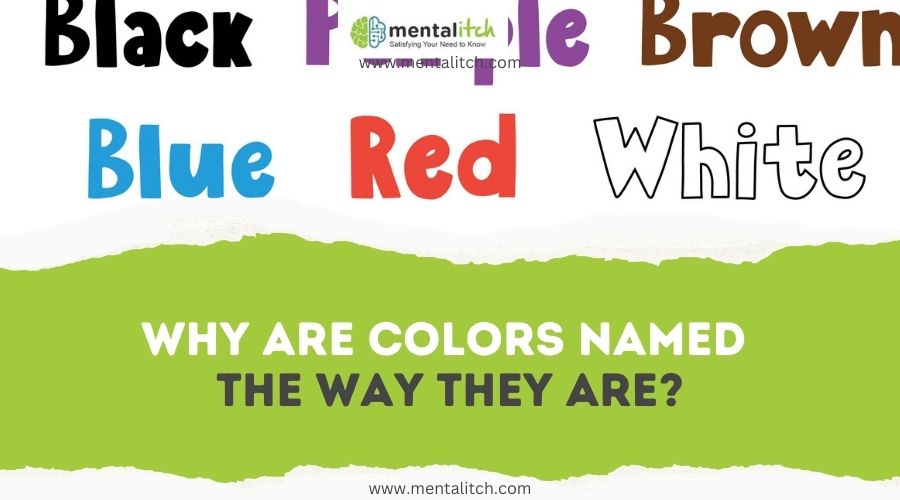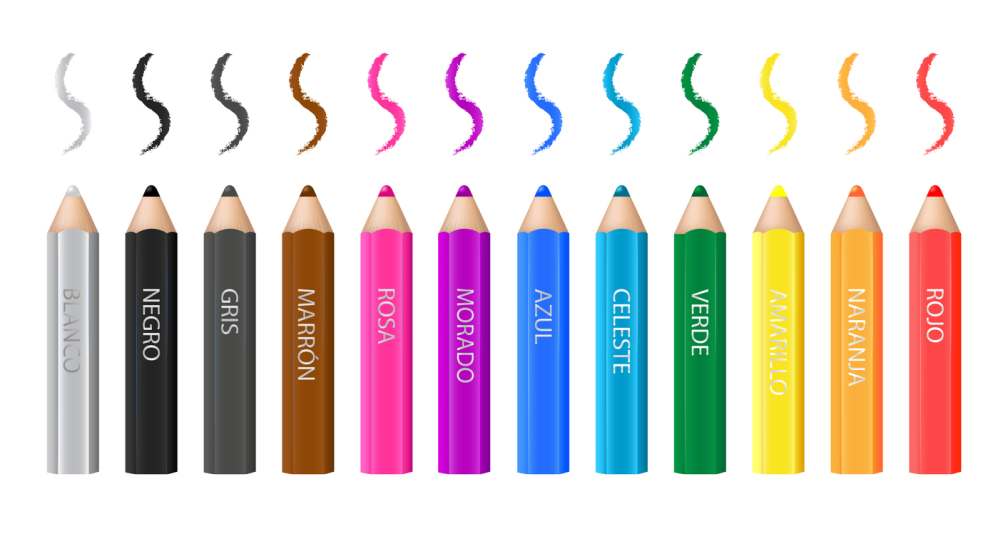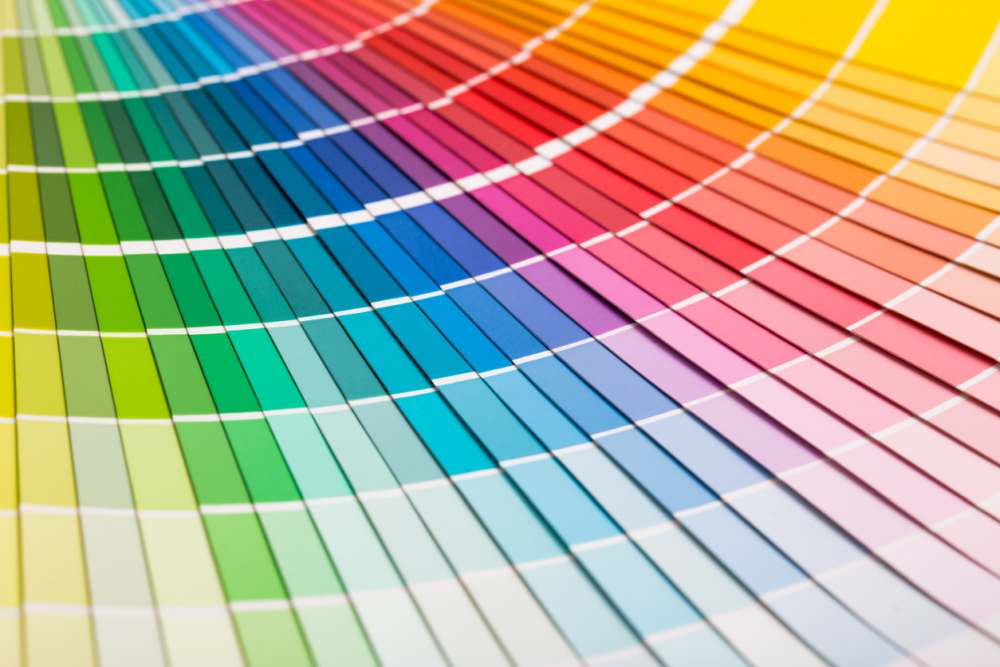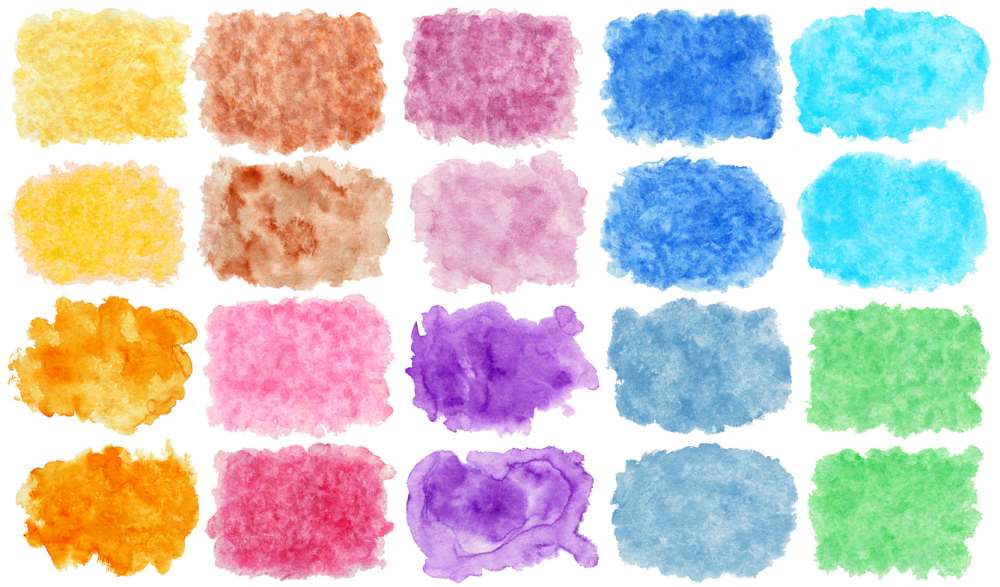Have you ever paused to wonder why the sky is described as “blue” or why the grass is called “green”? The names of colors are so ingrained in our vocabulary that we seldom question their origins. Yet, behind every hue lies a fascinating story that intertwines history, culture, and science.
From the rich azure of lapis lazuli that inspired the ancients to the deep magenta born from the chemistry labs of the 19th century, the journey of color names is as diverse as the palette it describes. In this article, we’ll discuss the story behind color names, uncovering the layers of history, art, and psychology that shape our perception and language.
Whether you’re a painter, a designer, or simply a curious mind, join us in discovering why colors are named the way they are.
The Historical Tapestry of Color Names
Ancient Beginnings
Long before the advent of modern color theory, ancient civilizations were naming colors based on the natural elements and resources around them. For example, “red” often stemmed from obvious sources like blood and clay, while “blue” might have been inspired by the rare and precious lapis lazuli used in jewelry and art. These early names were more than just labels; they were a reflection of the cultural and material significance of colors in daily life.
Trade and Cultural Exchange
As societies evolved and interacted through trade and conquest, the color lexicon began to expand and transform. The Silk Road and other trade routes were not just pathways for goods but also for ideas and language. For instance, the word “orange” entered the English language through Old French and Arabic, ultimately deriving from the Sanskrit word for the orange tree. This linguistic journey mirrors the physical journey of the fruit and its vibrant color from distant lands to European tables.
Influence of Dyes and Pigments
The development of new dyes and pigments also played a crucial role in the naming of colors. In the past, the availability of dyes was a limiting factor in the variety of colors that could be reliably produced and named. The discovery or creation of a new dye could lead to the addition of a new color name to the vocabulary. For instance, the rich purple dye extracted from the murex sea snail was so costly and revered that it became synonymous with royalty and power, illustrating how the economics of color influenced its nomenclature.
Evolution Over Time
Over the centuries, the way we name colors has continued to evolve, influenced by technological advancements, artistic movements, and cultural shifts. The names of colors have become more than just descriptors; they are imbued with the stories, trades, and discoveries of the human race. This historical tapestry of color names is a testament to our perpetual interaction with the world around us and our endless creativity in capturing its essence.
The Science and Psychology Behind Color Naming
Color Perception and Language
The science behind color naming begins with our perception. Human eyes perceive colors through light hitting the retina, where rod and cone cells respond to varying wavelengths. However, the way we attach names to these perceptions varies greatly. Research suggests that language shapes our color discrimination; communities with more words for colors can distinguish between them more finely. This linguistic relativity highlights the interplay between our biological capabilities and cultural expressions in naming colors.
Emotional Connections
Colors are not just seen; they are felt. The psychology behind color naming often taps into the emotional and associative power of colors. For example, “warm” and “cool” colors evoke distinct feelings and connotations, influencing their names and usage in language. Red, often associated with passion and urgency, can stir different emotions and cultural associations, influencing its nomenclature across languages.
Color Theory in Naming
Color theory also plays a pivotal role in how colors are named and understood. The relationships between primary, secondary, and tertiary colors, along with concepts like hue, saturation, and brightness, inform our understanding and naming of colors. Artists and designers often use this theory to describe and create a vast array of colors, leading to a more nuanced and precise color vocabulary that goes beyond basic color names.
The Impact of Technology
Advancements in technology have further shaped color naming. Digital displays and printing technologies have expanded the visible spectrum we interact with, leading to new color names and standards. The RGB (Red, Green, Blue) and CMYK (Cyan, Magenta, Yellow, and Black) models used in digital and print media, respectively, have introduced a technical dimension to color naming, merging scientific precision with aesthetic expression.
The science and psychology behind color naming reveal a complex interplay of sensory perception, emotional response, and cultural expression. As we continue to explore and understand this vibrant spectrum, the way we name and relate to colors will undoubtedly evolve, reflecting the ongoing dialogue between our inner and outer worlds.
Color Names Across Cultures
The way colors are named and categorized varies significantly across different cultures, reflecting a rich diversity in linguistic and perceptual traditions. Here are some notable points regarding color names across cultures:
- Basic Color Terms: Some languages have a limited set of basic color terms, while others have a more extensive palette. For example, many languages might only differentiate between light and dark or cool and warm colors rather than specific hues.
- Cultural Significance: Certain colors hold unique cultural significance, which can influence their naming. In Japan, the color “ao” historically encompassed both blue and green, reflecting cultural perceptions. Similarly, the color “saffron” holds religious and cultural importance in India, leading to a specific term that might not exist in other languages.
- Environmental Influence: The natural environment can shape color naming, with terms often derived from local flora, fauna, and geographical features. For instance, many desert cultures might have multiple words for different shades of yellow and brown, mirroring the landscape.
- Language and Perception: Research, such as the famous study of the Himba tribe in Namibia, shows that language can shape color perception. The Himba have multiple words for different shades of green but do not differentiate between blue and green, which affects their ability to distinguish these colors in experiments.
- Color Naming Conventions: The conventions for naming colors can also differ. In some cultures, colors are often named after objects with a characteristic color (e.g., “sky blue” or “leaf green”), while in others, more abstract or descriptive terms might be used.
Understanding color names across cultures not only highlights the diversity of human language and perception but also emphasizes the profound ways in which our environment and cultural heritage shape the way we experience and describe the world around us.
Synthetic Colors and Brand Names
The landscape of color naming underwent a dramatic transformation with the advent of synthetic pigments and the rise of brand identities. This modern palette is not just about new hues but also about how colors are used in marketing and branding to evoke specific feelings and associations.
- Synthetic Pigments: The 19th century marked the beginning of synthetic pigment production, revolutionizing the available color spectrum. Mauveine, discovered in 1856, was the first synthetic dye, leading to a surge in vivid and previously unattainable colors in fabrics and art. This era expanded the color vocabulary significantly, introducing names like “magenta,” “cyan,” and “alizarin crimson” into common parlance.
- Technological Advances: Advancements in chemistry and technology continued to broaden the color palette, giving rise to neon colors, fluorescent paints, and phosphorescent materials. These developments not only enriched the visual experience but also introduced a slew of new color names, many of which are tied to their chemical origins or the process used to create them.
- Brand-Specific Colors: In the realm of branding, colors have become closely associated with specific companies and products. For instance, the distinctive red of a certain soda brand or the specific shade of blue used by a social media platform are so iconic that they’re immediately recognizable and have their own brand-specific names. These proprietary colors are a testament to the power of color in brand identity and consumer perception.
- Commercialization of Colors: The commercialization of colors has led to the creation of unique color names as marketing tools. Names like “Tiffany Blue” or “Millennial Pink” are not just descriptive but carry connotations and stories that enhance their appeal. This trend reflects how color naming has evolved from descriptive to strategic, playing a pivotal role in branding and consumer engagement.
The modern palette, with its synthetic colors and brand names, highlights the intersection of art, science, and commerce. It illustrates how color naming has transitioned from purely descriptive to a complex system where names evoke emotions, convey brand values, and become integral to our visual and cultural landscape.
How Primary Colors Got Their Names
Red
The name “red” comes from the Old English word “rēad,” which is related to words in other Germanic languages, such as “rot” in German and “rood” in Dutch. Historically, red was one of the first colors to be named, likely because it is the color of blood and fire, two very significant elements in human life. The use of red pigments dates back to prehistoric times, with early humans using ochre to create vivid cave paintings. If you want to learn more about the this, you may read our article about the story behind naming the color red.
Yellow
“Yellow” traces its origins to the Old English “geolu” or “geolwe,” which is linked to the Proto-Germanic word “gelwaz.” The color’s name is believed to be derived from the natural sources that were used to create yellow dyes and paints, such as saffron, turmeric, and certain clay. Yellow has long been associated with sunlight and gold, both of which are key elements in many cultures and religions around the world.
Blue
The name “blue” is derived from the Old French word “bleu,” which came from the Old High German word “blao,” meaning “shining.” Blue pigments were historically rare and expensive, often sourced from minerals like lapis lazuli or produced through complex chemical processes. The precious nature of blue materials, such as the indigo dye, made the color a symbol of wealth and divinity in many cultures. If you need more information about this, you may read our article about how the color blue got its name.
Origin of Secondary Color Names
Orange
The name “orange” comes from the fruit of the same name. Before the English-speaking world was introduced to the orange fruit, this color was typically referred to as “geoluread” in Old English, which translates to “yellow-red.” The word “orange” was adopted into the English language from the Old French word “orange,” which in turn came from the Arabic “nāranj,” and ultimately from the Sanskrit “nāraṅgaḥ.” The widespread use of “orange” for both the fruit and the color began in the 16th century.
If you want to learn about the whole story, read our article about how orange got its name.
Green
“Green” is one of the oldest color names in the English language, with its roots going back to the Old English word “grēne,” which has the same root as the words “grass” and “grow.” This etymology reflects the natural world, as green is the color most commonly associated with vegetation, life, and growth. The word has Germanic origins, similar to the German word “grün.”
To find out more about this, you may read our article about how we come to name the color green.
Violet
The name “violet” is derived from the flower of the same name. It comes from the Old French “violete” or “violet,” which in turn is taken from the Latin “viola,” The term was first used as a color name in English in the early 15th century. The use of “violet” to describe the color reflects the human tendency to name colors after familiar natural elements, in this case, a commonly known and widely recognized flower.
If you are curious to learn more about its history, read our article about where the name of the color violet came from.
The Artistic Perspective – Colors in Creative Expression
In the realm of art, colors transcend their physical properties to become a profound medium for emotional and conceptual expression. Artists harness the power of colors to convey messages, evoke feelings, and bring their visions to life.
Emotional Resonance
Colors have an intrinsic emotional resonance that artists skillfully manipulate to create an emotional impact. The choice of colors in a piece can set the mood, from the tranquility of soft blues to the fiery passion of bold reds. This emotional connection is not just a byproduct of cultural associations but also an innate human response to color.
Symbolism and Meaning
Beyond their emotional impact, colors carry rich symbolism and meaning. Artists often use color symbolism to add layers of depth to their work. For example, green can symbolize nature and renewal, while purple might represent royalty or spirituality. These symbolic associations can vary significantly across different cultures, adding a layer of complexity to the artist’s palette.
Technical Mastery
The use of color in art is not just about the hues themselves but also about understanding and mastering the interplay of light, shadow, and composition. Artists study color theory to understand the relationships between colors and learn techniques to mix and match hues to achieve the desired effect.
Innovation and Exploration
Throughout history, artists have pushed the boundaries of color use, exploring new pigments, techniques, and concepts. The Impressionists, for example, revolutionized the use of color by focusing on the play of natural light and its effects on color perception. More recently, artists have explored the use of digital media and unconventional materials to create new color experiences.
Personal Expression
Ultimately, color in art is a tool for personal expression. Each artist brings their unique perspective to their color choices, using them to convey their individual voice and vision. Whether through the subtle use of pastels or the bold strokes of primary colors, artists imbue their works with a part of themselves through their use of color.
Famous Artists and Their Signature Hues
The following artists have not only popularized specific hues but also demonstrated the power of color in conveying deep emotional and conceptual meanings, forever associating their names with the iconic shades they used.
Yves Klein and International Klein Blue (IKB)
Yves Klein, a French artist, is renowned for his use of a unique shade of blue, which he patented as International Klein Blue (IKB). This deep, vibrant blue became a central element of Klein’s artistic and spiritual vision, symbolizing the infinite and the void. Klein’s monochromatic blue canvases and sculptures, part of his Anthropometry series and other works, left a lasting impact on the art world, making IKB synonymous with his name.
Anish Kapoor and Vantablack
Contemporary artist Anish Kapoor gained exclusive rights to use Vantablack, the blackest black pigment known, which absorbs up to 99.965% of visible light. Kapoor’s use of Vantablack has sparked much debate in the art community about the ownership and use of materials. The pigment’s ability to obliterate detail and depth creates a disorienting, abyss-like appearance in artworks.
Georgia O’Keeffe and Abiquiu Red
Georgia O’Keeffe, known for her paintings of enlarged flowers and New Mexico landscapes, often used a distinctive red hue found in the clay of the Abiquiu region. This warm, earthy red became a hallmark of her paintings, reflecting the intense colors and spirit of the American Southwest.
Vincent van Gogh and Van Gogh Yellow
Vincent van Gogh is famous for his vivid use of yellows, especially in his sunflower paintings and the series depicting his room in Arles, France. Van Gogh’s use of yellow, ranging from soft buttery hues to intense golden shades, conveyed warmth, light, and emotion. His distinctive palette has contributed to the enduring popularity and recognition of his work.
Mark Rothko and Rothko’s Reds
Mark Rothko, an American abstract expressionist, is well known for his large, luminous fields of color, among which various shades of red stand out. Rothko’s reds, often layered with oranges and yellows, create a mesmerizing effect that draws viewers into a deep, contemplative state. His innovative use of color has made Rothko’s work a pivotal part of the abstract expressionist movement.
Conclusion
The journey of color names is a fascinating story shaped by history, culture, science, and art. From the earliest color terms rooted in ancient civilizations to the unique shades defined by contemporary artists, the evolution of color names mirrors our collective human journey. As we delve deeper into the world’s colors, the origins and meanings behind these names offer a glimpse into our shared past and the boundless potential for future creativity and expression.







